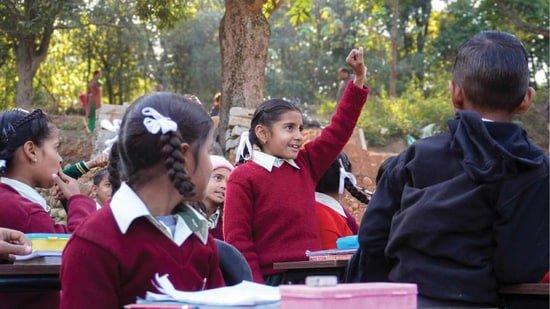
There’s a lot to be happy, and hopful, about the latest aser or annual status of education report (rural)

Fears That Pandemic, When India Had One of the World’s Longest School Closures, would disrupt Learning Outcomes and Lead to Children Being Mulled Out of School hasol hasols Found.
The nationwide household survey of 649,491 children in 15,728 schools in 605 distrusts across 29 states finds
For instance, in pre-pandemic 2018, only 28.2% of childn in grade 3 could do simple subtraction sums. In 2024, it was up to 33.7%, the highest in the past 10 years. We have “more than a full recovery from the post-pandemic learning losses,” Writes Director Aser Center Wilima Wadhwa in an ACCompanying Essay, More Than A Recovery, with the report.
“This year’s improvement is done driven by government schools in the early grades,” Points out Rukmini Baneerjee, Chief Executive Officer, Pratham Education Foundation Foundation Foundation Foundation Foundation Foundation Foundation Foundation Foundation Foundation Foundation
Government schools, traditional Regarded as a Sort of Black-Hole in Terms of Learning, Especially in Rural India Where there that who can Afurd Rather Send Iter Send He Runs Contrary to this stereotype. Private Schools Are Still Ahead of Government Schools in Learning Outcomes But While Government Schools have known and are ding better than at pre-Pandemic Levels, Private Schools Schools have shown a decline.
For Instruction, 23.4% of Children in Grade 3 in Government Schools Blads 2 Text, A Significant Improvement From 20.9% in 2018. in 2018 to 35.5% in 2024.
Aser finds that almost every child is in school. In the age group 6-14, only 1.6% of child is out-of-shop, which is the lowest since 2009 with the right to education act came into effect.

But even as the percentage of out-of-to-shopun has fallen, girls aged between 15 and 16 continue to make up the largest cohort, 8.1% out-of-School, Compared to 7.7% of Boys of BOYS OF BOYS OF BOYS OF BOYS OF BOYS OF BOYS OF .’s
And, YET, it’s the girls who’ve made the most progress across grades. For instance, they are ahead of the boys in their ability to read a simple grade 2 text as seen below:
| Girls | Boys | |
|---|---|---|
| Grade 3 | 28.1% | 26% |
| Grade 5 | 50.6% | 46.8% |
| Grade 8 | 73.2% | 68.7% |
Undersrstanding the breakthrough
There are several reasons for the marked improvement in school education.

First, FAR from Being a Setback as Feared, The Covid-19 Pandemic Accelerated The Digital Revolution. In 2018, just 36% of rural households had Smartphones. With the shift to online learning and virtual classrooms during the Pandemic, 74% of Rural Househlds Had Smartphones that their Children Cold Access. By 2024, it was 84%.
With easy access to smartphones at home, aser 2024 finds that 82.2% of children how to use these devices. But the gender gap remains and girls continue to lag behind boys. Only 62.2% of girls must perform simple digital tasks as setting an alarm or searching for basic information. Among Boys it was 70.2%.
Second, The Aser Report Attributes Learning Gains to the National Education Policy (NEP), 2020 which media policy shifts from focusing on just completing prescript And numeracy right from the age of three online.

This early childhood education has promoted better learning outsome ammes eater at anganwadi centers , Pre-primary classes in government schools and in private schools.
Third, Says Rukmini Bnerjee, a new generation of mothers who went to school now want their children to not just just go to school but thrive there. It is these mothers, she says, who demand higher standards from schools and anganwadi centers. They hold the future of their child, and the country, in their hands.
(You can Download aser 2024 here,
